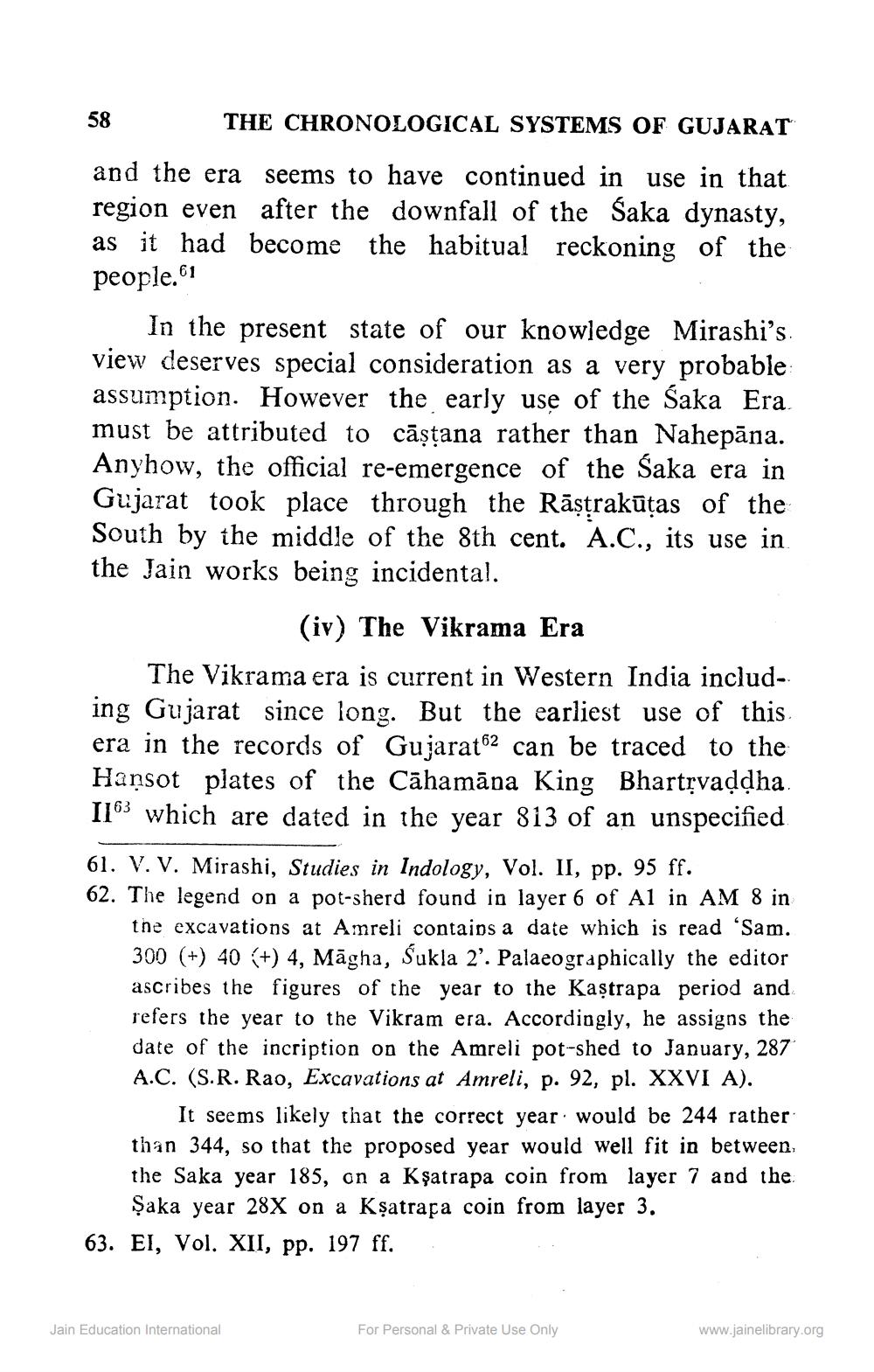________________
58
THE CHRONOLOGICAL SYSTEMS OF GUJARAT
and the era seems to have continued in use in that region even after the downfall of the Saka dynasty, as it had become the habitual reckoning of the people.61
In the present state of our knowledge Mirashi's view deserves special consideration as a very probable assumption. However the early use of the Saka Era. must be attributed to cāştana rather than Nahepāna. Anyhow, the official re-emergence of the Saka era in Gujarat took place through the Rāșțrakūtas of the South by the middle of the 8th cent. A.C., its use in the Jain works being incidental.
(iv) The Vikrama Era The Vikrama era is current in Western India including Gujarat since long. But the earliest use of this era in the records of Gujarat62 can be traced to the Haņsot plates of the Cāhamāna King Bhartņvaddha. 1163 which are dated in the year 813 of an unspecified 61. V. V. Mirashi, Studies in Indology, Vol. II, pp. 95 ff. 62. The legend on a pot-sherd found in layer 6 of Al in AM 8 in
the excavations at Amreli contains a date which is read “Sam. 300 (+) 40 (+) 4, Māgha, Sukla 2'. Palaeographically the editor ascribes the figures of the year to the Kastrapa period and refers the year to the Vikram era. Accordingly, he assigns the date of the incription on the Amreli pot-shed to January, 287 A.C. (S.R. Rao, Excavations at Amreli, p. 92, pl. XXVI A).
It seems likely that the correct year would be 244 rather than 344, so that the proposed year would well fit in between, the Saka year 185, on a Kşatrapa coin from layer 7 and the
Şaka year 28X on a Kşatrapa coin from layer 3. 63. EI, Vol. XII, pp. 197 ff.
Jain Education International
For Personal & Private Use Only
www.jainelibrary.org




